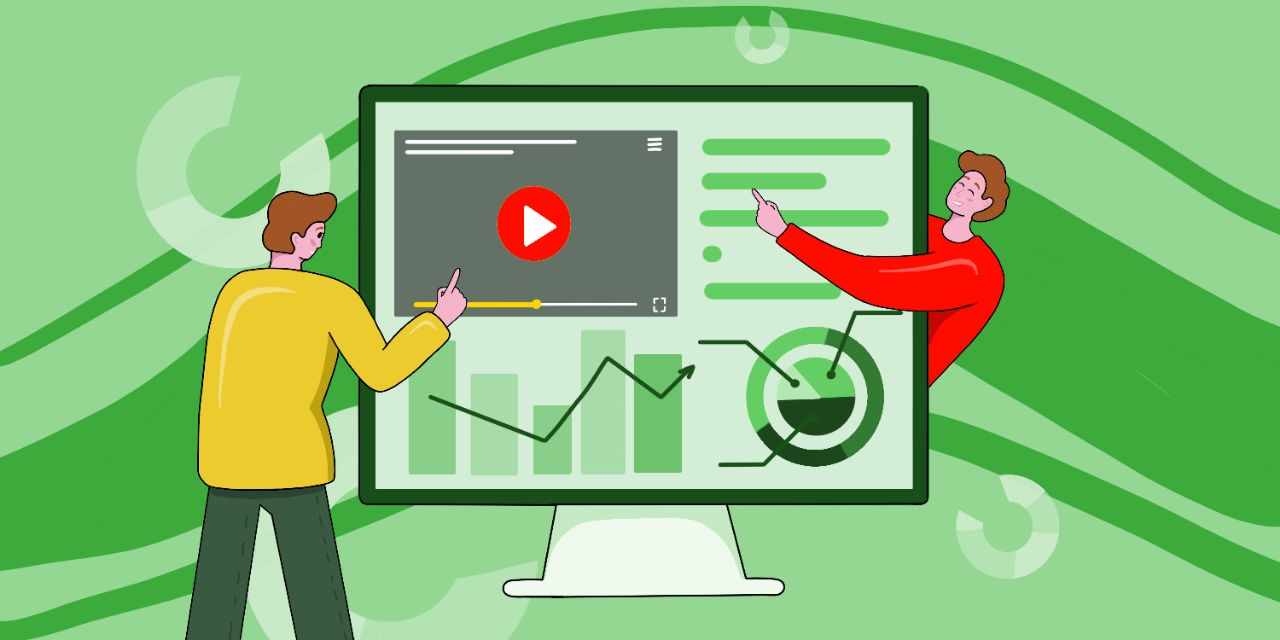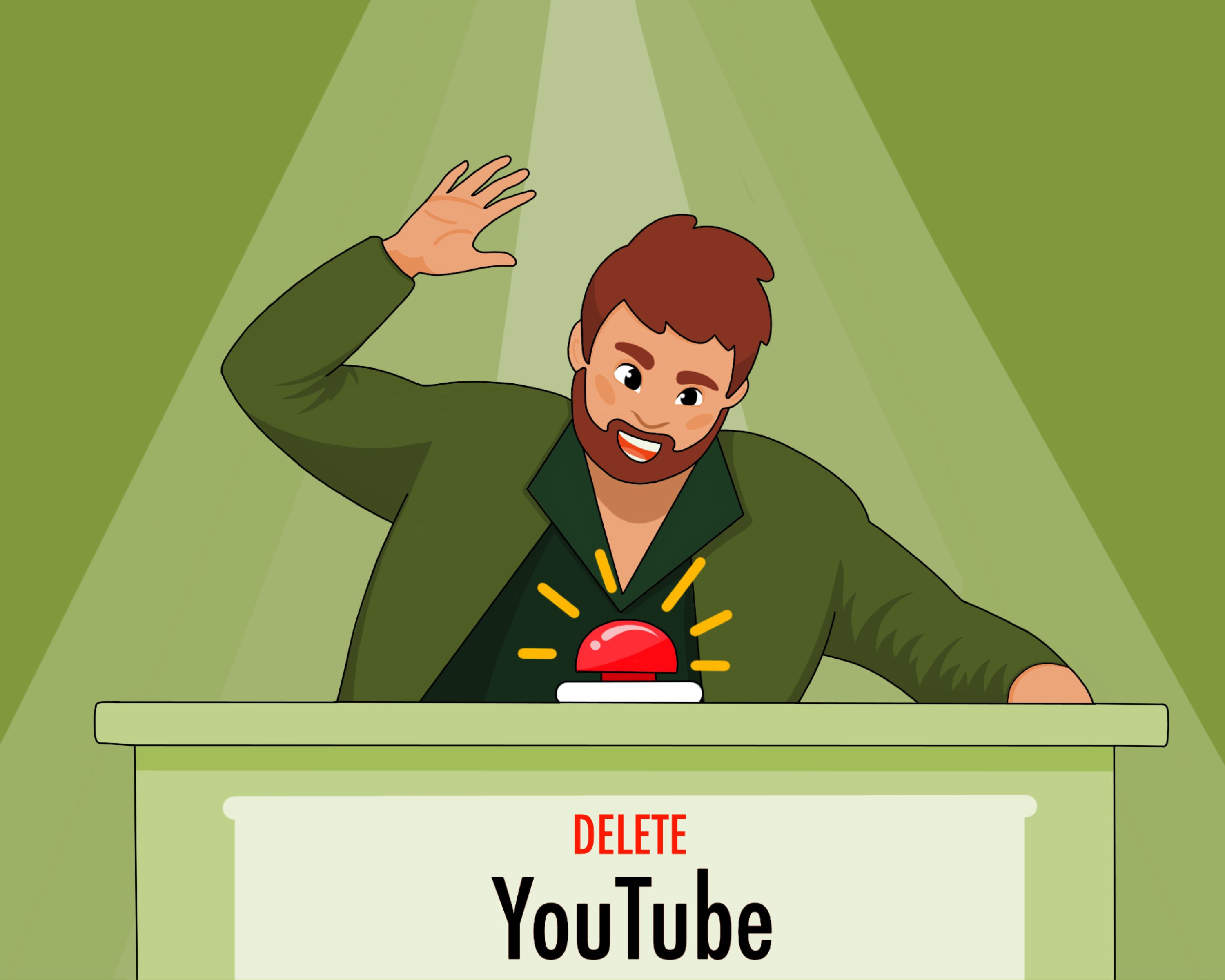5 YouTube Analytics Life Hacks. Creating a Portrait of the Subscriber

Why does YouTube seem so complex? Isn't creating and enjoying videos sufficient? We believe it hinges on your objectives. Not all approach YouTube for growth. Some utilize it as a personal diary or to cultivate a small community, unconcerned with viewer numbers.
But, how can one form that "small community" if they're lost among millions of channels?
For better or worse, continuous growth can't be achieved by having superficial ideas about your audience. It's not enough to think of your viewers as one single entity that likes playing Minecraft or fixing cars, for instance.
If you operate a YouTube channel and aim to monetize it, it's essential to recognize that brand building adheres to marketing principles. No marketer should start an advertising campaign without studying:
- "What product/brand are you promoting? (In this case, it refers to the answers to the questions: 'What is the channel about, what is its goal, and its purpose?')
- Who are the competitors of this product/brand? (Meaning, monitoring popular and interesting channels in the niche.)
- Who is the target audience of this product/brand? (Who is the viewer, and what do they want?)"
The final point is critical in marketing. Even an outstanding product won't sell without understanding the target audience..
The same applies to YouTube: as a channel creator, you become the client, the performer, and the marketer all in one. We "sell" our videos to viewers and want to earn well-deserved views. That's precisely why, more than anyone else, you must know about their interests and passions, problems and desires, work and leisure.
The task of a YouTuber is to foster long-term relationships with their audience, ensuring viewers not only watch a video once but also return for more content.
Easy analytics tools
Without basic analytics tools, you can't even start working on your own content. In an ideal world, audience analytics begins even before starting a channel.
However, where do you get data if your channel hasn't even launched yet? Worse still, many novice creators don't have access to data in the "Audience" tab since there is no data to collect. In such cases, you can rely on competitor analytics, various statistics, surveys, and communication with like-minded people on thematic forums. Luckily, in the 21st century, information on the internet is abundant.
But that's the ideal scenario. In practice, it's different: creators contemplate how to run a channel after it's already launched and suddenly stops attracting views and subscribers. That's when they realize they have no idea who their content is actually for.
Let's start with simple analytics data.
Demographics
Age and gender are crucial analytics data that help paint the initial portrait of your audience. These details determine everything, from the tone and channel's appearance to the slang used in videos, the imagery on covers, the presentation style, and even how you appear on-screen.
Let's consider creating a history-themed channel. You could target an experienced adult audience interested in historical facts and analyses. Another potential audience might be school students preparing for history exams.
In the first case, using youth slang might alienate the audience, as they are more mature. On the other hand, the younger audience in the second channel might not invest time in videos that don't help them with their exams. Although it's the same niche and topic, the approach must differ.
Another aspect we're interested in through analytics is the location of our viewers.This affects the channel's content, the audience's mentality and behavior, and also the optimal timing for video releases.
Time spent by viewers on YouTube
This is also a superficial and simple metric that tells you about your audience's life schedule. If you know the age of your target viewers, you can generally understand when they are active on the platform.
For instance, it's evident that a significant portion of the working population will come to YouTube after 5pm, as it's the end of the workday. For a younger audience, their active time may vary from 3pm to late at night, as students typically have a diverse lifestyle. However, regardless of the prevailing age on your channel, there may not be many views during working or school hours.
But there's something that creators often forget. YouTube will provide you with the time when your audience is generally on the platform. Therefore, the schedule gives us clues about the most favorable time to catch viewers with our video and attract them to the channel.
Watching time for your videos
Analyzing this graph over an extended period, for example, a year or since the channel's creation, is essential. How does it help you understand your audience?
The number of views and their fluctuations will tell you if your audience is interested in your videos over a short period or a more extended period. In other words, do your viewers consistently watch everything you create, or is it a one-time event? If your goal isn't to create one-time viral videos, this graph will indicate whether you need to make changes to your channel or not.
A smoother graph is better, as it means your videos consistently generate views over a longer period, and your channel won't "die" after a single surge in audience activity.
However, it's worth noting that some niches assume the audience won't watch videos for years. A common example is news-related content. So, as with any analytics work, consider the individual peculiarities of your channel.
Working deeper with analytics
When you know the approximate age, dominant gender, and region of your audience, you can start refining the viewer's profile. Why is this so important? The answer is simple: for precise targeting of their interests.
Imagine you are looking for information on how to lose weight. In your search results, you see hundreds of thousands of videos that address this query. However, videos titled "Why You Can't Lose Weight Quickly" or "How to Lose Weight Without Torturing Yourself with Diets and Exercise" are likely to catch your attention the most. Especially if you are afraid of diets, struggle to stay on track, and want to shed pounds without suffering from hunger and excessive physical exertion.
A creator who doesn't conduct in-depth audience analysis would settle for knowing that the majority of his viewers are women aged 18 to 40. Therefore, they might simply title the video, "How to Lose Weight Quickly." However, a creator who is well acquainted with their audience will address specific problems and interests. This type of content will be more appealing to the viewers.
It's crucial to research not only the general characteristics of your audience but also their behavior and motivations. Analytics can be of great help in this regard.
New and regular viewers
During data analysis, we rely on information provided by YouTube managers, which is publicly available and not insider information.
Among all viewers on any channel, three types can be distinguished:
1. New Viewers: Those who open your channel for the first time.
2. Returning Viewers: Those who follow regularly or sequentially.
3. Casual Viewers: Those who watch a couple of videos and may or may not return after some time.
YouTube plans to consolidate the aforementioned types into a unified table in Analytics, but for now, we can only investigate the data separately. Information about new viewers can be found in "New Viewers," data about returning viewers is labeled as "Returning Viewers," and casual viewers are referred to as "Casual Viewers."
Different types of channels attract different types of audiences in varying proportions. Hence, before delving into data analytics, analyze what type of channel you have. Here are some examples from YouTube managers.
- In the first case, a group of channels with a large loyal audience is considered. These may include talk show channels or independent creators such as podcasts, where there is a consistent host and a strong sense of individuality. These channels focus on building and maintaining a loyal following.
The dominant viewers on the previously mentioned channels are returning or loyal viewers. Their consistency in returning to watch the channel's content creates a habit among the audience. While the topics may vary, what attracts them is the consistent format: a single host, a specific theme for the podcast, and a consistent setting or environment. Channels with these characteristics tend to have relatively stable statistics, with fluctuations being minimal.
If your channel focuses on an expert topic, and you maintain a regular schedule while personally hosting it, then having a greater number of returning viewers can be considered normal. Your viewers are like-minded individuals who share your views and interests, and you can add something unique to their profile.
- The second group of channels, as investigated by platform specialists, consists of channels with diverse video topics covering a wide range of subjects. They consistently upload varied content, such as news, movie trailers, informative videos on random topics, and so on.
The diversity of content leads to a diverse audience. It becomes challenging to predict who exactly a video will resonate with and who the target audience is. Often, these viewers watch a specific video on a particular topic and then leave the channel.
For these channels to grow, they need to constantly search for fresh and interesting content because their audience profile is not very defined. On the positive side, they can attract a significantly larger number of viewers due to the broader range of topics, which also offers high growth potential if utilized correctly. However, it's important to note that it won't be easy, as it is much more difficult to establish and launch a “variety” channel compared to a niche-specific one.
In these cases, it is much harder to specify the audience profile since the data is spread across various levels. There are viewers who watch everything on the channel, others who visit occasionally and then leave, and there are those who are only interested in select video topics.
It's similar to two restaurants - one operating in a small town, catering to loyal customers, and the other located in a tourist destination, serving new customers each time. Both models work, but they cannot be mixed. Otherwise, viewers with clear goals and expectations of what they want to see on the channel will simply stop watching and unsubscribe if they don't get what they desire.The key is to strike a balance between diversity and consistency to cater to the audience's interests while keeping them engaged and coming back for more
- The third statistic relates to channels that are constantly working on high-performing videos that make it to the top. The channels that have had a viral video or videos spark their growth.
Don't miss the moment when you take off. You can't just skyrocket and enjoy success; you need to plan content that would make these new viewers stay with you. Of course, you can't retain everyone, but you must make an effort to convert a larger number of them into loyal subscribers.
What should you do in the above scenerio?
You start by analyzing the video that took off. This will tell you which audience came, why they were interested, and what else they watched after that video. This will not only help you get to know your audience better but also determine which topics might be equally in demand. Based on the data from this video alone, we can create a good portrait of your potential target audience.
Other videos and channels that your viewers are interested in
Nothing else reveals your viewers' interests, passions, and preferences as explicitly as the ability to see what they are watching on YouTube.
In the section "Channels your viewers watch," you can find information on which channels your viewers have been watching most frequently in the last 28 days. This report will help you understand which collaborations with other creators will appeal to your audience.
Now, let's move on to the last section - "What your viewers watch."
Here, you will find data on what videos from other channels your subscribers have been watching in the last seven days. This report will help you discover new video topics and titles. You can also use this information to consider options for thumbnails and potential co-creation opportunities.
This data will let you know what truly resonates with your audience - whether it's vibrant colors and clickable thumbnails or the usefulness of the content and the opportunity to get clear answers to their questions.
With this information, you have compiled a comprehensive audience profile based on somewhat superficial data about your channel and viewers.
There are still a lot of things in analytics that can help in creating videos for different types of our viewers. And we will definitely come back with a deeper analysis.
Good luck!




